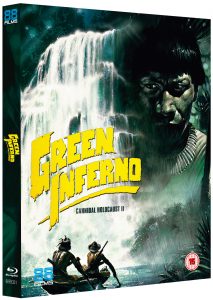 There’s nothing more confusing than taking a trip to the celluloid jungle; right let’s try to explain this. The Green Inferno has nothing to do with the more recent homage by Eli Roth (2013), in fact he nabbed the name of it for his own film. It is also known as Cannibal Holocaust 2 but this is simply a cash-in marketing tool given to it due to the success and infamy of Ruggero Deodato’s 1980 epic. It also has nothing to do with Michele Massimo Tarantini’s Massacre In Dinosaur Valley (1985) which for similar reasons was also marketed in places as Cannibal Holocaust 2. More importantly it has no bloody cannibals in it and is not a gut-muncher as it has been widely described either. It is also known as Paradiso Infernale and Naturo Contro ie Against Nature. Right hopefully I have cleared that up.
There’s nothing more confusing than taking a trip to the celluloid jungle; right let’s try to explain this. The Green Inferno has nothing to do with the more recent homage by Eli Roth (2013), in fact he nabbed the name of it for his own film. It is also known as Cannibal Holocaust 2 but this is simply a cash-in marketing tool given to it due to the success and infamy of Ruggero Deodato’s 1980 epic. It also has nothing to do with Michele Massimo Tarantini’s Massacre In Dinosaur Valley (1985) which for similar reasons was also marketed in places as Cannibal Holocaust 2. More importantly it has no bloody cannibals in it and is not a gut-muncher as it has been widely described either. It is also known as Paradiso Infernale and Naturo Contro ie Against Nature. Right hopefully I have cleared that up.
Directed by Antonio Climati in 1988 this was one of the very last trips to tropical hell made by the Italian film industry before it run out of money and virtually collapsed. Considering much of the rubbish that came out of the country at this time and the fact that the films before the death knell were pale imitations of the classics from the late 70’s and early 80’s it is one hell of a lot better than one might have expected and is certainly a more obscure title than many of its ilk. Some may remember it being originally released by VIPCO here where it was described as ‘definitely more fun than the original’ Cannibal Holocaust, which it certainly is and not such a grim and grimy degradation ride but many will not have seen this widely undiscovered classic before. Congratulations must therefore go to 88 Films for giving it a Blu-Ray debut as number 49 of the labels Italian Collection. It looks fantastic too.
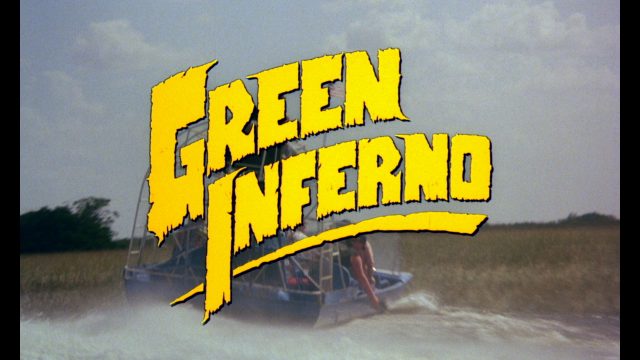
At first it appears the film doesn’t know quite what it wants to be and indeed starts off in the USA as though it is a muscle-bound 80’s action adventure complete with bad over the top cheese laden music of the time. 3 guys are basically up for an adventure of a life-time but are broke and have to quite spectacularly steal a sea-plane to embark on it and hook up with a sassy reporter and go on a search for a lost professor deep in the Amazonian jungle. Despite the flowing testosterone you can’t help but like the guys and they certainly are brilliant at getting whatever needs to be done. Bogota Columbia is the first port of call and once there and hooked up with reporter Jemma (May Deseligny) the guys and equally determined and fearless gal embark into the great wilderness. Nothing is simple for them however and first they have to join in on a conservation exercise with some locals to capture some monkeys for scientific / ecological purposes in order to get some fuel to continue their journey. Local natives capture them for the 1st of many times due to them stealing their food source and the film is already heavy with messages and an intelligent critique that spilled into many of these movies about man’s invasion and exploitation of 3rd world territories. Luckily they talk their way out of horrible torture and death and it’s just as well the indigenous tribe speak English (or even Italian if you are watching that version of the film). From here we embark on a wild ride where everyone is exploiting the habitat from head-hunters to gold prospectors, animal hunters and classical music playing trappers, pirates, child organ harvesters and treasure hunters. The jungle sure is a crowded place! Each time our heroes along with some friendly tribes-people encounter these moral corrupters they steam in uncaring of danger, kick ass and perform miraculous rescues. Prepare yourself in one staggering scene to see one of our adventurers water-ski in his shoes at great speed pulled along by the sea-plane!
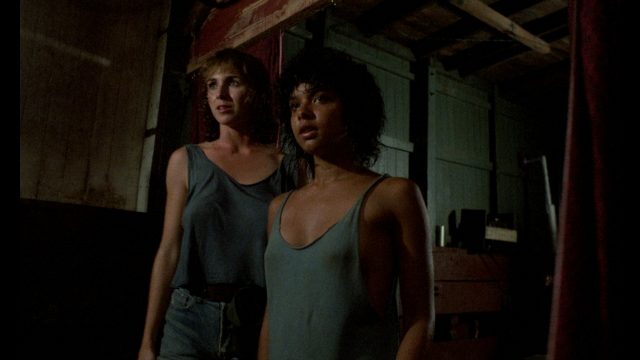
Climati had gained experience as cinematographer with the likes of Jacopetti and Prosperi on Mondo films such as Mondo Cane (1962) and Africa Addio (1966) he went on to follow in their controversial footsteps with his own Savage Man Savage Beast (1975) and was obviously no stranger to hostile environments and knew how to work them. Believe you me this place is hostile too from both man and beast. If you are a bit phobic about snakes and spiders this is definitely a film to avoid. Even the smaller snakes are deadly and following a bite we do get some real insight into tribal customs and rites as Climati turns things into a near documentary style at the heart of tribal customs, a fascinating section of the film. The Green Inferno is not as violent as many of the actual cannibal films that preceded it but does deliver the gore on occasion especially in a scene with treasure hunters with guns up against the spears and arrows of the natives. This is reflected partly by the surprise 15 certificate awarded by the BBFC. It also doesn’t seem to be as much of an exercise in exploitation either and there are plenty of insights into the way of life of the people here that are more honest and its message as far as our quartet of explorers are concerned is one of joining them in friendship, not corrupting their way of life and protecting the animals that inhabit the jungle rather than massacring them. However when you have torpedo fish trying to burrow up your bum and eat you from the inside out or massive snakes attached to your penis as a form of torture there are bound to be a few casualties. I really enjoyed this jungle adventure although I admit I did have strange and nasty dreams after watching it involving bloody huge snakes. I could even go out on a limb and say it’s a bit of an understated classic. Well they certainly don’t make films like this anymore and The Green Inferno displays as much if not more so of the spirit of Werner Herzog as it does Umberto Lenzi or Ruggero Deodato.
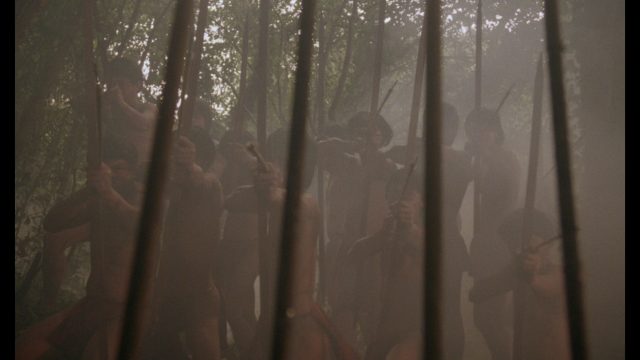
One thing that has really surprised me is looking up the actors of the 4 main explorers and unless I’m mistaken discovering this was pretty much the only film that they made. I wonder why and what happened to them as they all were very convincing and wonder if perhaps actually enjoyed the lifestyle they portrayed so much they actually went on to live it? From what I can tell the guys who played Fred and Mark were brothers Marco and Fabrizio Merlo and Marco is credited with writing the original story along with director Climati. Perhaps there’s a certain biographical element to the surprisingly upbeat end of the film itself. It certainly suggests that there is a strong moral compass to the movie as a whole.
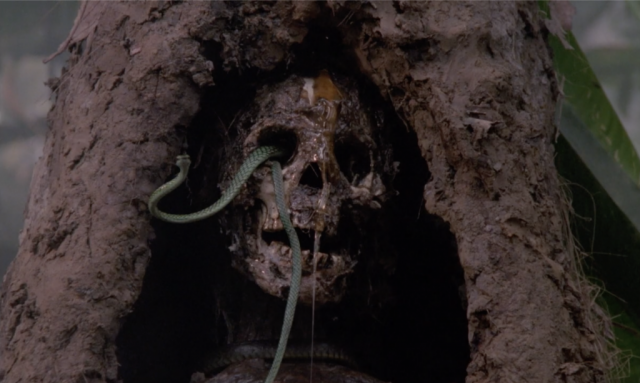
With everyone involved missing in action as it were, unfortunately these questions are not answered in the extras. Instead we do get a half hour documentary ‘Scenes from Banned Alive: The Rise and Fall of Italian Cannibal Films.” This does pretty much as described with input from Sergio Martino along with the aforementioned Lenzi and Deodato who are frankly never going to quite agree on who actually birthed the sub-genre. Unfortunately with Lenzi passing in 2017 the missed opportunity of sitting them down in a room with clubs to sort this out has gone but these interviews are very interesting and have plenty of facts about the films for you to ummm digest! No doubt advocates of the films discussed will have heard many of these tales in the past and have every film mentioned lining their shelves. As for the rather odd Green Inferno it is not mentioned but can definitely be looked upon as the last of its type; the likes of which we will probably never quite see again.
Pete Woods
Green Inferno AKA Cannibal Holocaust 2 – The Italian Collection 49

Leave a Reply